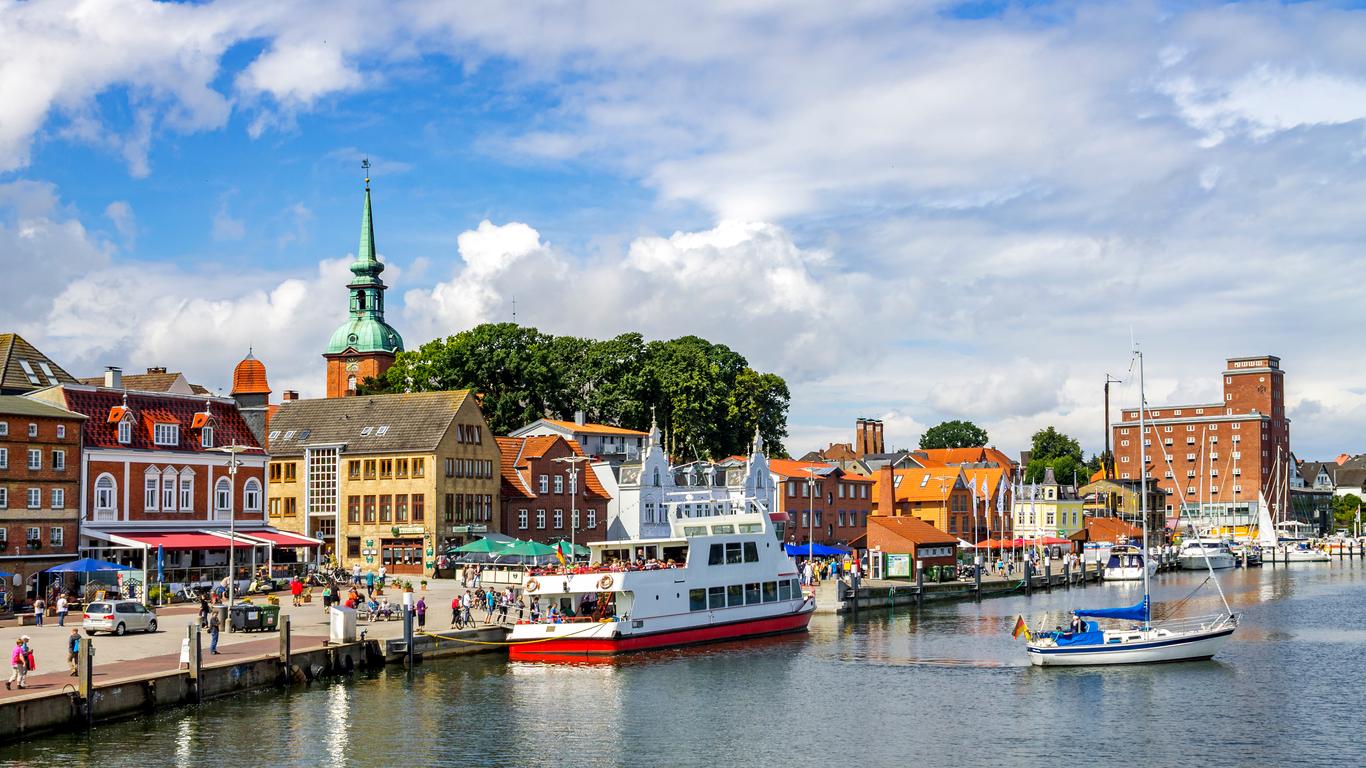Located at the tip of the Flensburg Fjord, Flensburg is a Baltic Sea port in Schleswig-Holstein. It was originally founded by Danish settlers and developed into one of the most important trading towns in Scandinavia before passing to the Kingdom of Prussia in 1864. It boasts a rich maritime past celebrated at its harbour museums and encompasses several fine churches and historic residences.
Things to do in Flensburg
You can delve into the local history at the Museumsberg Flensburg, which occupies two buildings atop a hill in the centre of town. Admire the gabled Heinrich-Sauermann-Haus where interiors from the 18th and 19th centuries are recreated before exploring the Art Nouveau rooms of Hans-Christiansen-Haus. It exhibits regional artwork from the 19th and 20th centuries, including nature-inspired paintings by Carl Ludwig Jessen and Louis Gurlitt.
Stroll along the waterfront boardwalk of the Historischer Hafen, which hugs the western edge of the Flensburg Fjord. Admire the historic boats bobbing on the water and learn about the town’s seafaring history at the Flensburger Schifffahrtsmuseum. Cruises are offered aboard the Alexandra, a beautifully preserved early-20th-century steamer, and there are several traditional inns once frequented by shipbuilders and sailors.
Dominating the skyline of Flensburg is the Nikolaikirche, a striking Gothic church that dates back to the late 14th century. Marvel at the ornately decorated double organ commissioned by King Christian IV and admire the mid-18th-century altar fusing elements of both Baroque and Rococo styles.
Getting around Flensburg
Flensburg is around 1.5 hours’ drive from Hamburg Airport and is connected by regular trains to Hamburg. Buses travel throughout Flensburg, although the town centre is compact enough to explore on foot.





